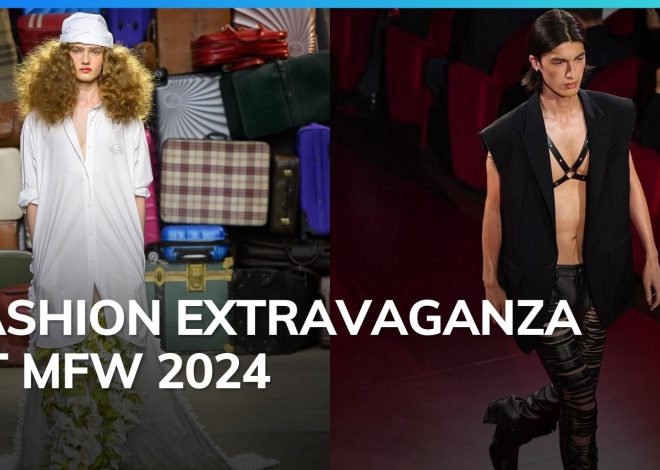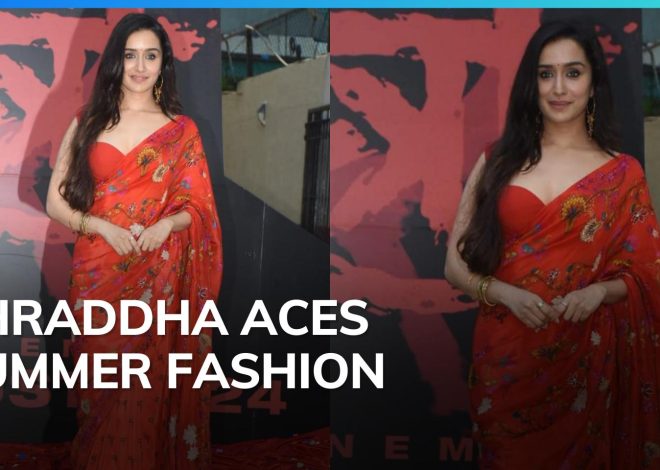
The Eternal Life of the ’90s Supermodel
How did a small group of models manage to stay on top for so long?
Bluejeans and little black dresses may be forever, but fashion’s essential promise is change and reinvention. In the same way that clothing styles evolve season after season, the models wearing those looks are in constant flux, articulating whom we consider beautiful, cool and powerful at any given moment. Modeling careers generally aren’t long, though, and depending on how you look at it, the industry’s churn can be thrilling or unnerving. It’s fun to talk about trends in makeup and shoes; it’s horrible to think about trends in people.
This fall, several new documentaries looked at the meaning and implications of the modeling industry’s shifting tastes. “The Super Models,” a multipart series streaming on Apple TV+, focuses on four generational stars: Naomi Campbell, Cindy Crawford, Linda Evangelista, and Christy Turlington. (All were executive producers on the project.) Ubiquitous and ultraglamorous, this tight-knit group of models helped define fashion and pop culture in the 1980s and ’90s, from Campbell’s hypnotizing runway walk to Crawford’s thirsty 1992 Pepsi commercial.
How did the Supers get so big, with such a lasting presence? In part, they had the good fortune of entering fashion at a time when designers wanted to celebrate women who were larger than life and full of personality. The Supers met the moment with the full force of their charisma, and they amassed a kind of power that gave them influence within their industry and choice in their careers. Against the advice of her agents, for instance, Crawford agreed to pose for Playboy in 1988, an unconventional move for a model of her caliber. “I said, ‘You don’t need to pay me a lot of money, as long as I can have control of the images, and I wanted the right to kill the story if I don’t like it,’” she says in “The Super Models.” Playboy expanded Crawford’s fan base and helped her land a job hosting MTV’s new “House of Style” program, putting her on a track for more mainstream opportunities.
In “The Super Models,” these moments of self-determination commingle with reminders that the modeling business is governed by gatekeepers. To model is to be chosen — by a scout on the street, by an agent, by a casting director, by fashion designers and cosmetics brands. By the early ’90s, fashion started worshiping new kinds of models, like the fragile-looking Kate Moss, moving away from the high-octane glamour of the ’80s and toward a more unvarnished look. Yet the Supers remained in the limelight by adapting, learning to slouch in their grunge-inspired outfits and sharing the runway with the newcomers.
The Supers assumed that their time at the center of fashion would eventually come to an end. “I don’t think there was a long-term plan for most young women who started modeling,” Crawford says. “Because we thought about maybe you’d have a five-year career.” Although Crawford and her cohort blew past those expectations, their longevity in the public eye stems in part from decisions to expand their purview beyond modeling and into fields less susceptible to the whims of fashion, including beauty and home-goods brands, philanthropy and public-health advocacy. To endure in modeling, it seems, you have to be willing to get out.
In “The Super Models,” at least one fashion insider pins the end of the supermodel era to the 1997 murder of Gianni Versace, who encouraged his models to be the biggest version of themselves. But another key factor was the fall of the Iron Curtain, when modeling scouts started looking for talent in the former Soviet Union. In the mid-to-late ’90s, fashion shows began filling with models from Eastern Europe who were very young, very thin and very white. Increasingly, designers preferred uniformity over personality, childlike looks over womanly swagger.
The stories of models who don’t fit that particular mold are chronicled in two other documentaries released in September, “Invisible Beauty” and “Donyale Luna: Supermodel,” each of which highlights gains and setbacks in racial representation in fashion over the last 50-plus years.
“Invisible Beauty” focuses on the career and activism of Bethann Hardison, a longtime advocate for models of color. (Hardison directed the movie with Frédéric Tcheng.) A former model, Hardison ran her own agency in the ’80s and ’90s, with a roster that included Kimora Lee Simmons, Veronica Webb and Tyson Beckford. She closed her agency in 1996 and stepped away from the industry until, several years later, she started getting calls about the near-complete lack of models of color in fashion. The racism was explicit. “I would hear things that were shocking,” Kyle Hagler, a modeling manager, says in the film. “ ‘We’re not using Black models this season.’ ‘We can’t pay the Black model as much as the white model.’”
“When you think you’ve accomplished something in history,” Hardison says, “and then you turn around and see that what you’ve accomplished is just erased, it’s disheartening in one way, and it’s confusing.”
In 2007, Hardison returned to fashion to address the lack of diversity in modeling, giving interviews, holding town halls and sharing reports that tracked the number of models of color hired during a given season. Among models, representation has improved since then — the proportion of fashion executives is a different story — but it remains a pressing issue, across race as well as factors like size. “Invisible Beauty” serves not just as a document of Hardison’s long career as she enters her 80s, but also as a warning against the industry’s tendency to backslide into marginalizing models of color.
As for “The Super Models,” the moment feels primed for Campbell, Crawford, Evangelista and Turlington to reclaim their throne. At the height of their careers, they were true celebrities, captivating the public in addition to fashion nerds. By the late ’90s, however, Hollywood stars were replacing professional models on the covers of magazines like Vogue and Elle, and by the mid-2000s — those years of catwalk conformity — it was a weird flex to know the names of runway models. (I speak from experience.) But with the rise of social media, fame and modeling intertwined once more, as models with an audience again became an asset to designers and brands. Today the modeling business is a celebrity soup, peppered with the children of famous individuals (including Kaia Gerber, Crawford’s daughter), influencers and megastars like Kim Kardashian, who walked the Balenciaga runway at Paris Haute Couture Week in July 2022 alongside Nicole Kidman and Dua Lipa. The same can be said for fashion in general, as the Met Gala has ballooned into an extravagant Grammys-Oscars mash-up and celebrities like Pharrell Williams have assumed design posts at major fashion houses.
The Supers’ wild fame in the ’80s and ’90s rhymes with our current moment, with one foundational difference: They didn’t become models because they could draw a crowd — they drew a crowd because they were sensational models. A technical aptitude for posing and stalking the runway may not matter now the way that it did then, but it’s humbling nonetheless to watch archival footage of the Supers in action, those women in full command of their faces, their bodies and their electric presence.
Source photographs for illustration above: Misan Harriman/Apple TV+; Bruce Weber/Magnolia Pictures; Keith Majors/Magnolia Pictures; Raoul/IMAGES/Getty Images; PL Gould/IMAGES/Getty Images; Robert Mitra/WWD/Penske Media via Getty Images; George Chinsee/WWD/Penske Media via Getty Images.
Eliza Brooke is a journalist in Washington, D.C. She has written about soothing posture videos, the novelist Ottessa Moshfegh’s wardrobe and facial injections performed on TikTok.


